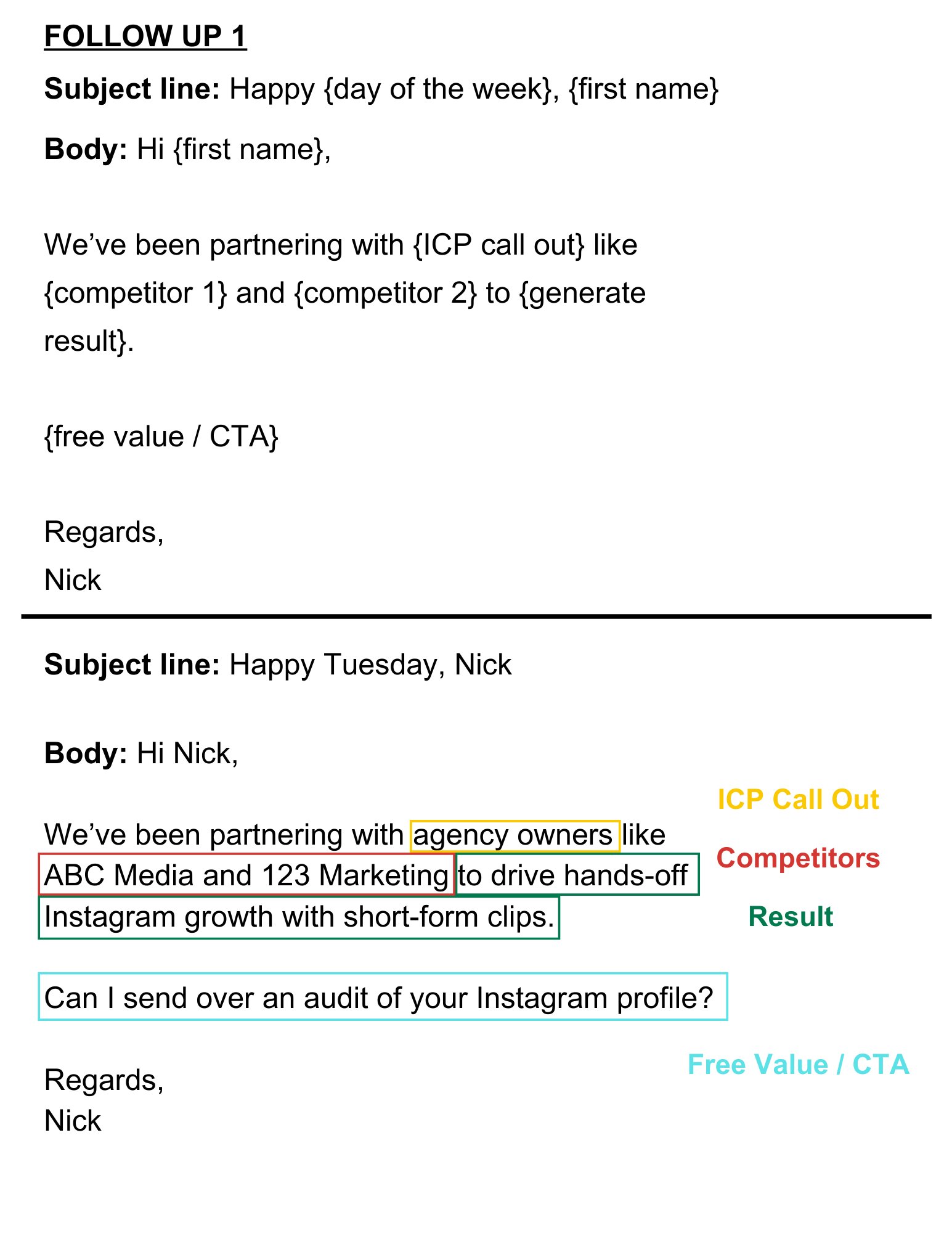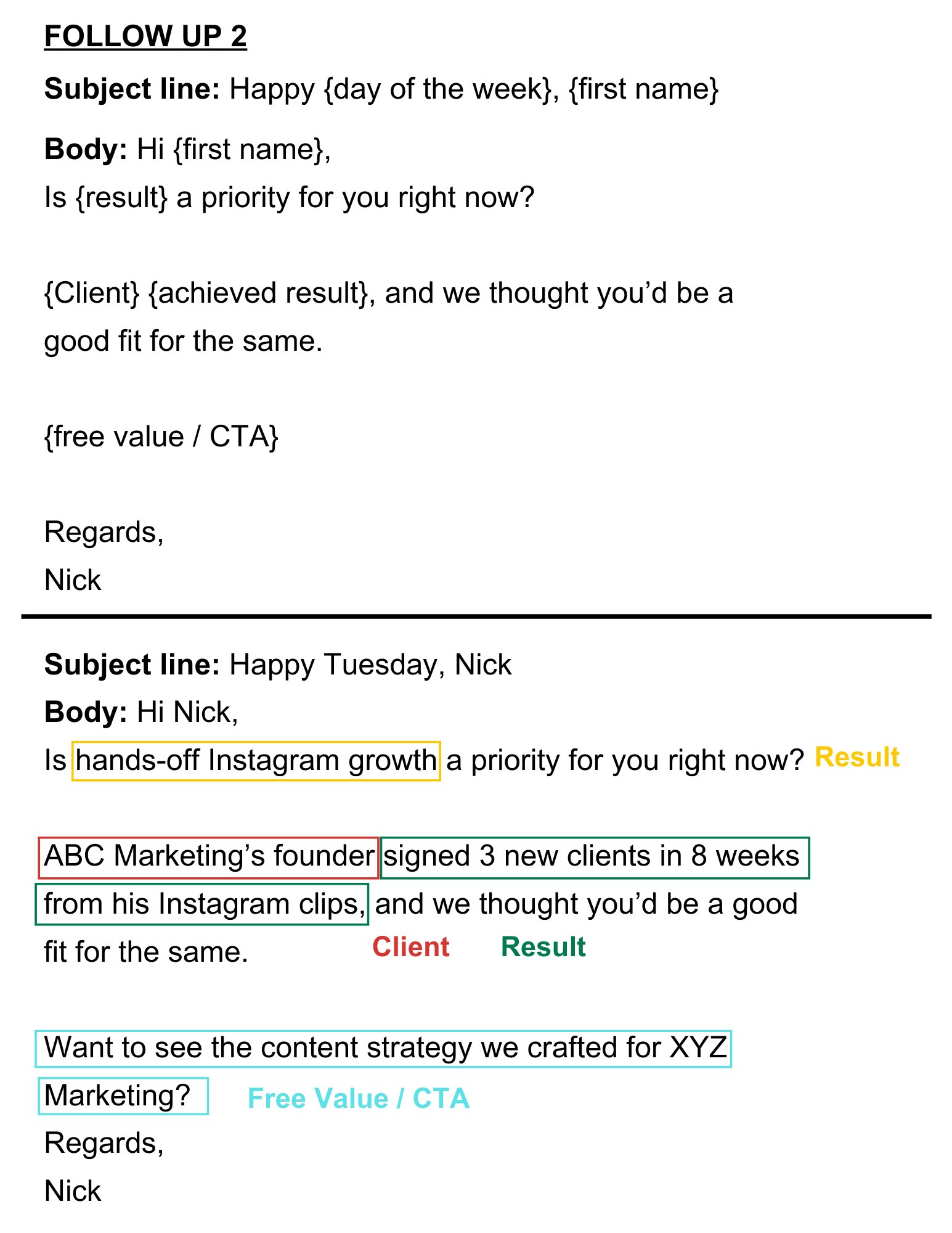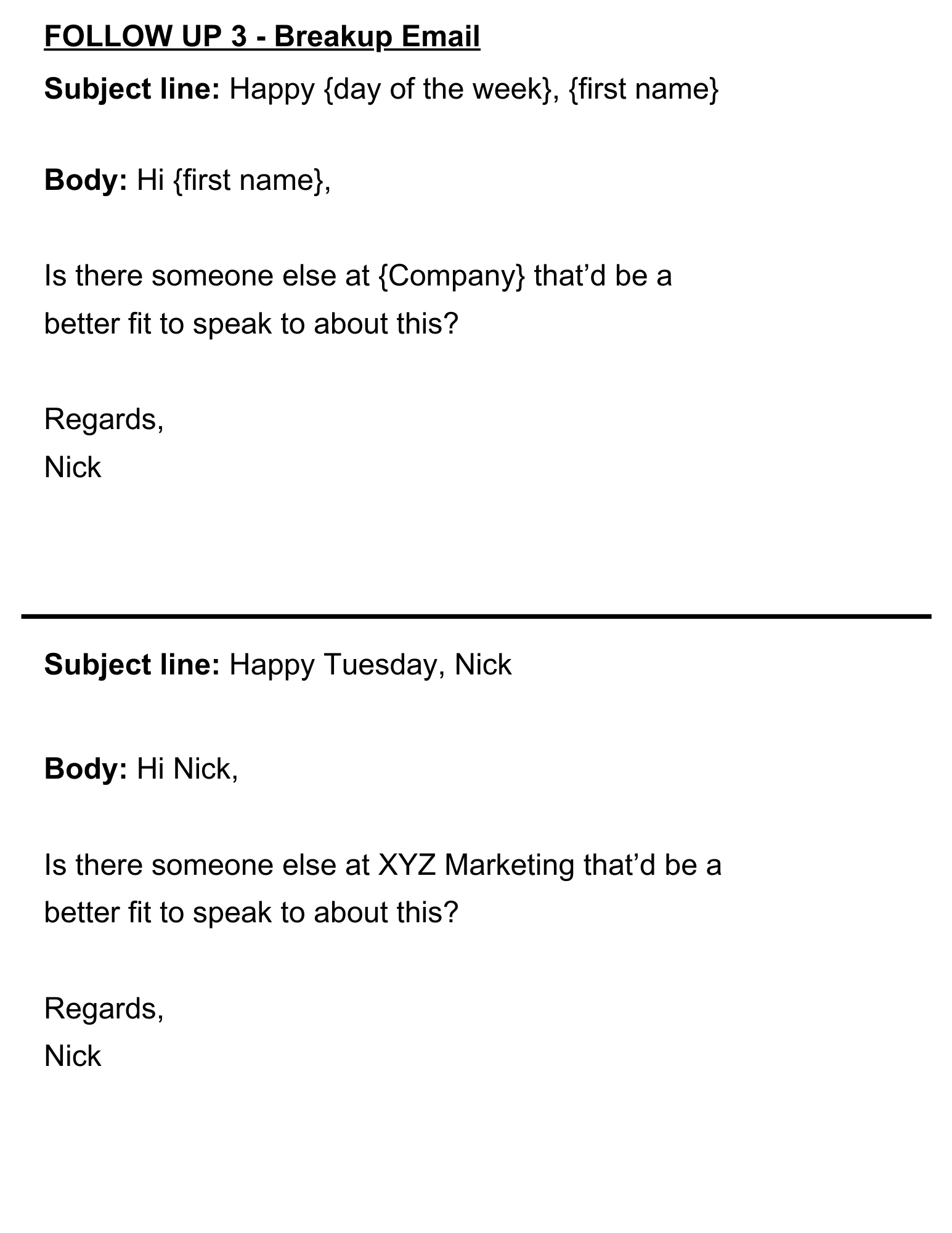Frameworks for inspiration / reference.
Julia Carter
Email 1: new thread
- Trigger
- Pain statement / question
- Solution idea (not about you)
- Soft Ask
l
Email 2: (thread)
- Asking if they tried something that you solve for
- Examples
- Soft ask
Email 3: (thread)
same as above (other example)
Email 4: new thread
- Trigger / context
- Problem statement
- Solution to solve problem
- Example
- Soft ask
Email 5: (thread)
- Offering some sort of service for them / favour
- Soft ask
Email 6: (thread)
- Hail Mary Examples
- Fire Stats
- Soft ask
Devesh Tilokani
Step 1: Video + message - Day 1
{{Prospect first name}} - Not sure how often you receive videos like this. I recorded one to introduce myself. {{Link of the video}}
Step 2: Bump message - Day 3
Any feedback on the video, {{Prospect first name}}?
PS: I promise I’m an actual human and not a robot.
{{Insert the robot photo}}
Step 3: Pain point Number 1 - Day 6
{{First name}} - typically when I speak with {{Buyer personas}}, they say {{Pain point #1}} is a challenge. Have you seen something like this?
Step 4: Pain point Number 2 - Day 9
{{First name}} - typically when I speak with {{Buyer personas}}, they say {{Pain point #2}} is a challenge. Have you seen something like this?
Step 5: Pain point Number 3 - Day 12
{{First name}} - typically when I speak with {{Buyer personas}}, they say {{Pain point #3}} is a challenge. Have you seen something like this?
PS: happy to send a 1-min explainer video, if you think that might be useful.
Step 6: Last message + 1-min explainer video - Day 15
{{First name}} - either my outreach was actually terrible or you are {{Insert something they are spending a lot of time on}}. I'll try to catch you maybe later. Here’s the 1-min explainer video I mentioned: {{Insert link}}.
Jed Mahrle
Email #1:
Hey {{first-name}} - [mention the buying trigger we found].
[Make a hypothesis about a problem they’re experiencing because of that trigger].
If it sounds relevant, I think I found a way we can help with this.
Mind if I share more info?
The key to this first email is being intentionally vague about how we solve the problem.
First, we “show them we know them” in the first line.
Then, we nail the problem they’re likely experiencing in the second line.
Finally, in the third line/CTA, we create curiosity with the goal of getting them to respond to find out how we solve this problem.
Email #2: same thread
For more context, {{first-name}} - it involves [your solution for solving the problem].
Here’s a visual to explain how it works:
[Insert a screenshot of what your product does to solve this problem]
Think this could help?
In the second email, we're explaining how we solve the problem with a visual. This gives the sequence synergy and flow.
Email #3: same thread
{{first-name}} - If [problem] is top of mind given [buying trigger], I thought this could help: [insert helpful resource].
Happy to share more resources on this if you’d like.
In the third email, we share a helpful resource with no CTA. The goal is to help them solve part of the problem for free with a helpful resource.
Ideally, this resource comes from a 3rd party (i.e. not from our company so that we don’t come off as biased).
By giving first, we build trust so that hopefully, they’ll come back to learn how we can help them solve the whole problem.
One week later we repeat this thread in a new email chain - but we focus on a new problem.
Nick Abraham
The proven cold email sequence that never stops working:
— Nick Abraham (@NickAbraham12) October 9, 2023
(bookmark this for later) pic.twitter.com/rThNDiH6rn




Christian Plascencia
Email 1: Intro
- offer
- case study
- CTA
Email 2:
intro > case study > value CTA
Email 3:
intro > pain point > solution CTA
Email 4:
intro > value CTA > PS: case study
Lemlist
Access best-performing outreach templates from 400+ million emails sent by 37,000+ outbound experts:

Stats
Response rate averages, from Instantly founders:
| Step | % of replies |
|---|---|
| 1 | 69.19 |
| 2 | 17.42 |
| 3 | 7.09 |
| 4 | 2.38 |
